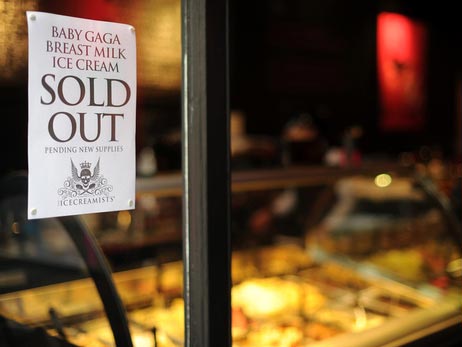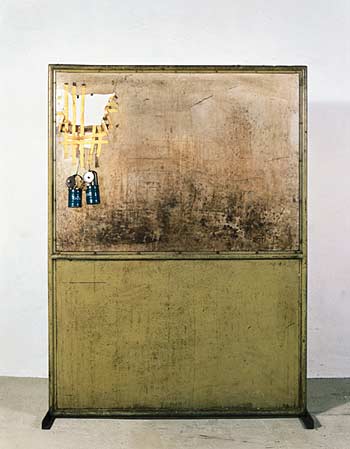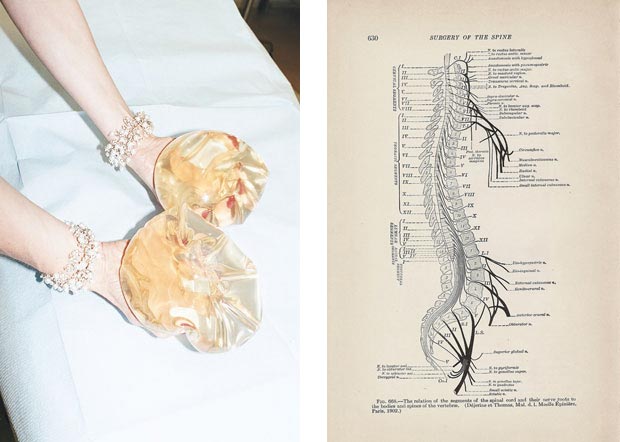 Texas landowners ended up on the ‘Mexican’ side of the Homeland Security Department’s border barrier.
Texas landowners ended up on the ‘Mexican’ side of the Homeland Security Department’s border barrier.
Man arrested for driving more than 3 miles in reverse.
Bank robber sues police after being arrested with his underpants on show.
Toddler spends 4 hours locked in bank vault.
Voodoo candles burning during sex caused a five-alarm fire that ripped through a Brooklyn apartment building.
Porn Machet Murder. Charley Chase recalls, “I only worked with him once. It was a boy-girl scene and it was terrible.”
Every year forensic scientist Brendan Nytes sees a few cases where a dead rat or mouse is found in box of cereal, a jug of vinegar or a loaf of marble rye. His job is to distinguish genuine contamination from the surprising number of cases involving the intentional introduction of a dead rodent to a perfectly wholesome food product.
Postal worker accused of spitting his feces on a police officer after being arrested on suspicion of drunken driving.
The world’s biggest family: Ziona Chan has 39 wives, 94 children and 33 grandchildren.
Ancient Britons used scooped-out human skulls as drinking cups in a mysterious ritual that also involved eating some of the flesh inside, scientists said.
Why would someone fake a serious illness online? Jenny Kleeman on the strange world of Münchausen by internet.
Caravaggio’s crimes exposed in Rome’s police files.
Jurors Less Likely to Convict Defendants Wearing Glasses, Say Lawyers and 2008 Study.
How Urban Outfitters President Richard Hayne turned a few hippie beans into a hip $700 million retail empire.
Here’s Why France Isn’t An Economic Backwater.
The Myth of Japan’s “Lost Decades.”
Japan’s status as our (i.e. the West’s) economic and cultural horizon peaked in the 1980s. So much has changed. Whatever happened to Japan?
A new study explores how your last name influences how fast you buy stuff.
State by State Housing Market Infographic (US).
Panicky behaviour can trigger stock market collapses. Now researchers say there could be a way of spotting it in advance.
The study tested the difference between moral forecasting and moral action—and the reasons behind any mismatch. The findings look encouraging: People act more morally than they would have predicted.
Clinicians have often referred to ultrasound technology as the “stethoscope of the future,” predicting that as the equipment shrinks in size, it will one day be as common at the bedside as that trusty tool around every physician’s neck. According to a new report in the New England Journal of Medicine, that day has arrived.
A new medical device controlled via smartphone could help doctors detect cancer more quickly.
Researchers recently unveiled the first complete millimeter-scale computing system that is about the size of the letter “N” on the back of a penny. The computing system – the tiniest fabricated to date – is a prototype of an implantable eye pressure monitor for glaucoma patients.
 Genetic evidence now spotlights the United States as the source of recent fire ant invasions in the rest of the world. Red fire ants cause at least $6 billion a year in damage and control requirements in the United States alone.
Genetic evidence now spotlights the United States as the source of recent fire ant invasions in the rest of the world. Red fire ants cause at least $6 billion a year in damage and control requirements in the United States alone.
Male capuchin monkeys urinate on their hands and then rub the urine into their fur to attract females.
Why does polygamy continue at all, if it’s so bad for a woman’s reproductive success?
About male pregnancy.
We may not be quite so delicate today, but euphemism — from the Greek for “auspicious speech” — is with us still.
Certainly in the world of the runway, the ability to walk like a gazelle in ridiculously high heels is all.
Publishers Weekly doesn’t like my work very much. Before you roll your eyes and/or get all excited at the prospect of a classic “I can’t believe I got a bad review!” hypersensitive-author meltdown, let me hasten to add that I have absolutely no interest in refuting anything they’ve ever written about my books.
Charlie Sheen: Coke, Hookers, Hospital, Repeat.
The Tippling Club, Singapore, where molecular mixology is married with chic design and cutting-edge gastronomy. More: tipplingclub.com And: Molecular mixology.
A volunteer project takes advantage of citizen mapping efforts and renewed scrutiny of “food deserts” in low-income neighborhoods, where residents lack places to buy fresh food and face a higher risk for obesity and chronic disease.
Do all cities have neighborhoods?
Designing a city for safe protests.
Why Backroom Deals Aren’t So Bad.
Who owns Kafka? An ongoing trial in Tel Aviv is set to determine who will have stewardship of several boxes of Kafka’s original writings, including primary drafts of his published works, currently stored in Zurich and Tel Aviv.
Representative Men, by Ralph Waldo Emerson.
 The Perplexing Choice in Existence Predicament: An Existential Interpretation of Burgess’s A Clockwork Orange. [PDF]
The Perplexing Choice in Existence Predicament: An Existential Interpretation of Burgess’s A Clockwork Orange. [PDF]
The Bobby Fischer Defense.
How to Make Oyakodon (Japanese Chicken and Egg Rice Bowl) and Okonomiyaki (Japanese Assorted Pancake).
7 Reasons I Never Went Vegan.
6 Subtle Ways You’re Getting Screwed at the Grocery Store.
The methods for treating jellyfish stings vary, and many remedies can do more harm than good. One exception is the application of vinegar, which according to several studies can deactivate the venomous nematocysts that jellyfish release.
13 Ways of Looking at Pac-Man.
10 Realistically Awkward Movie Sex Scenes.
5 Amazing Things Invented by Donald Duck. (Scrooge McDuck Did Inception First)
Thoughts on design. A collection of articles written by Paul Rand.
“Smack My Bitch Up” performed by The Beatles. [Thanks Glenn]
Pizza.
Dominic McGill.
Sociological charts of black history, hand-made by students of famed African-American thinker and activist W.E.B. DuBois at Atlanta University in 1900.
When I saw the image, I immediately thought of Josephine Meckseper’s photograph Pyromaniac 2 and I tweeted that the T Magazine cover was clearly a “ripoff.”
Dead Island, Video game trailer. [Thanks James]
vag_costume.
The butterfly and the Gucci baby.
fuckyeahmarriedwithchildren.tumblr.com
























